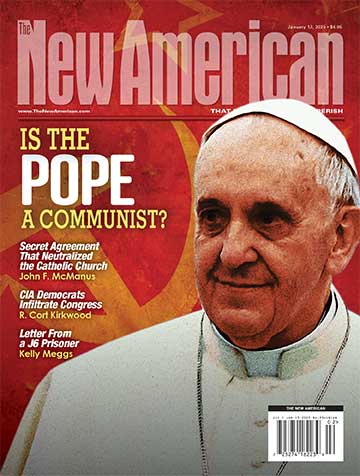
The United States Food and Drug Administration passed sweeping new measures yesterday that will change tobacco marketing rules dramatically. According to the new rules, American cigarette sellers must place graphic images on the warning labels on cigarette packages, including images of corpses and diseased lungs. The FDA claims that the warnings are intended to reduce cigarette-related diseases.
The images are intended to support current warnings found on cigarette packages, including “Cigarette Smoke Contains Carbon Monoxide,” and “Smoking Causes Lung Cancer, Heart Disease, Emphysema, and May Complicate Pregnancy.” However, according to the FDA, without the presence of ghastly images, the labels are virtually ineffective.
Under consideration for the images are pictures of dead bodies, cancerous lungs, children exposed to second-hand smoke, and rotting teeth. Hamburg explains that the images would cover 50 percent of the front and back of cigarette packages and 20 percent of print ads.
Business Week writes, “The agency will seek public comment in selecting images from among 36 proposed graphics in June 2011 as it aims to reduce the U.S. smoking rate to 12 percent in a decade from the current 21 percent. Cigarettes can’t be sold in the U.S. after October 22, 2012, without the labels pairing images with text such as ‘Smoking can kill you.
The FDA is also considering including contact information on the warning labels that will provide resources to help smokers quit.
FDA Commissioner Margaret Hamburg declared:
Every single pack of cigarettes in our country will in effect be a mini-billboard that tells the truth about smoking.
The health consequences of smoking will be obvious every time someone picks up a pack of cigarettes.
The measure is part of a June 2009 law that gave the FDA authority to regulate tobacco, including marketing and labeling guidelines, banning certain products and limiting nicotine.
According to Business Week, the images may in fact reduce smoking rates. “Canada, the U.K. and Brazil are among 38 countries that require graphic cigarette warnings, according to data compiled by the Campaign for Tobacco-Free Kids in Washington. One in five Canadian smokers reported reducing his intake as a result of the graphic labels, according to a study of more than 600 people.” No word on whether the smokers actually quit smoking or whether they just smoked a bit less frequently.
In truth, there’s probably not a person over the age of 10 in America who doesn’t know that smoking is a precursor for increased illness. The number of Americans who smoke has fallen significantly in the past 40 years, but the decline has been halted recently. Meanwhile, 450,000 Americans purportedly die prematurely as a result of smoking-related disease and 8 million more suffer chronic diseases as a result of smoking. The total cost on the economy is nearly $200 billion annually, reports the L.A. Times.
The Times also writes, “Other potential actions include further raising taxes on cigarettes and increasing the cost of health insurance for smokers.” For years, it has been legal to charge smokers more for their health insurance in order to offset the additional $12,000 per year in costs smokers tend to incur. Likewise, ObamaCare “calls for the increases to be more widely used beginning in 2014,” the L.A. Times reports. It adds, “So far, however, that surcharge has not been applied to any significant extent.”
Of course, the figures on the costs of smoking on society, like the mandated graphic images on the cigarette packages, are meant to induce compliance through fear. The numbers given by various sources don’t add up. If 21 percent of the U.S. population smokes and their healthcare costs are about $12,000 higher per year, this means that over 60 million Americans smoke at an additional healthcare cost of over $720 billion per year, yet the LA Times puts total costs to the economy at $200 billion per year. These numbers don’t jive.
Even the $200-billion figure is also skewed. Nearly the only way smoking can cost the economy at all is if people other than smokers pick up the cost of smokers’ care — obviously caused by government meddling (end the meddling; end the costs) — and if a productive member of society becomes unproductive. Otherwise, it costs the country little because the bulk of the money smokers pay for their care goes to other Americans who will, in turn, spend it on other things and invest it. Smokers are just paying for a service — like going to get their hair cut. Many of the people suffering the ill-effects of smoking are in their retirement years and are no longer "productive" so the economy loses almost nothing by their sickness if they pay their own bills.
Despite the hype, Altria’s Philip Morris USA of Richmond, Virginia, supports the warning label measure as a means to standardize manufacturing requirements and foster the development of less harmful tobacco products.
“Philip Morris USA has actively participated in the FDA’s rulemaking and public comment processes and plans to do the same on this proposal,” the company stated in an e-mail.
In opposition to the labels are Reynolds and Lorillard Tobacco Companies, both of which are in pursuit of a lawsuit to overturn the original 2009 law that called for graphic warning label requirements. In a brief filed with the U.S. Court of Appeals, the company asserts, “It’s unconstitutional for the government to confiscate the top 50 percent of both sides of cigarette packaging and mandate shocking color graphics.”
Furthermore, the tobacco law forces tobacco companies to pay fees to an FDA agency, the Center for Tobacco Products and Tobacco Products Scientific Advisory Committee, which regulates tobacco products and product reviews.
According to The Blaze, the final warning labels will be chosen in June after reviews of scientific literature and results from an 18,000-person study.
The financial impact that the new warning labels will have on the tobacco companies remains to be seen. Following the announcement of the new measures, however, Business Week wrote, “Altria declined 37 cents, or 1.5 percent, to $25.21 at 4:03 p.m. in New York Stock Exchange composite trading. Lorillard fell 51 cents, or less than 1 percent, to $88.09 and Reynolds dropped $1.46, or 2.2 percent to $64.60.”
Photo: AP Images




